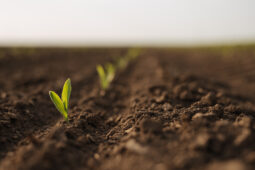More than 70% of Earth’s surface is covered in water where potentially millions of species live. Contamination in water bodies by nutrients and waterborne pathogens is a major quality concern worldwide.
For those involved in aquaculture, it is imperative to understand the importance of maintaining water quality. Read on to learn more about how stimulating water’s biology with the right organisms can benefit aquaculture systems.
The State of Aquaculture
Aquaculture is the farming of aquatic organisms such as fish, shrimp and mollusks either in marine, brackish water or freshwater environments. The global aquaculture market reached a value of around US $233.4 billion in 2020. With an average annual growth rate of 8.9% since 1970, aquaculture is now considered to be the fastest growing food-producing sector in the world.
While the United States is not a huge aquaculture producer, some organizations, such as Superior Fresh in Hixton, Wisconsin, are now launching indoor recirculation aquaculture system (RAS) businesses to raise salmon and other species. Since the 1960s when salmon farming began globally, the industry has grown substantially. Today approximately 70% of salmon produced worldwide is farmed. The aquaculture portion of fish farmed has increased from 10% to 50% over the last 30 years. Some organizations are even building vertical aquaponic farms that use the waste produced by farmed fish to provide nutrients to plants grown indoors.
How Waterborne Pathogens Impact Aquaculture
Whether a farm uses seawater in Asia or freshwater in the United States, pathogens can negatively affect farmers because they degrade water quality. Pathogens are disease-causing viruses, bacteria, fungi or protists. When pathogens infect a host, they can proliferate and spread from the original host to infect other organisms.
According to the National Oceanic and Atmospheric Administration (NOAA), when diseases occur in fish or shrimp farmed in confined environments with high stocking densities, illness spreads faster than it would in the wild. One reason is that because predators are not living in the same environment, diseased fish remain in the water longer and can put healthy fish and shrimp in danger. This also contributes to pond bottom sludge because as organic matter sinks to the bottom of the pond and decomposes in the sludge, nitrates and phosphates are released.
Pathogens present significant risks to aquaculture profitability because of impending losses in production, income, employment, market access or market share, investment and consumer confidence, food shortages and industry failure or closure of the business or industry itself. As a result, the United States has budgeted $375,000 per year to develop a national aquatic animal health plan, which is a clear indication by the government of the importance of health management.
A Microbial Insurance Policy for Water Quality Management
Managing water quality requires oversight of the following:
- Ammonia and nitrate levels – The quality of water alone can directly affect the health of aquatic organisms. Exposing shrimp or fish to improper levels of ammonia or nitrite can lead to stress and disease. Overfeeding can increase the presence of ammonia in the water, which is a waste product of animals.
Nitrites are another compound resulting from feeding and can be toxic to shrimp and fish. It is an intermediate product of the transformation of ammonia into nitrate by bacterial activity. Here, the absorbed nitrites from the gut bind to hemoglobin and reduce its ability to carry oxygen.
- Pond bottom sludge and hydrogen sulfide levels – Pond sludge degrades pond water quality, but also becomes toxic, as it produces hydrogen sulfide (H2S) gas. H2S is a toxic gas that’s a byproduct of the deterioration of organic matter, typically under anaerobic conditions. Anaerobic soils with moderate to high organic concentrations are subject to significant H2S, which is toxic to shrimp and fish even at low concentrations because it impedes their respiration. Anaerobic conditions can be detected if the pond’s bottom soil becomes black and releases a rotten egg odor when sediment is disturbed.
As the pond bottom becomes an oxygen-free environment, this can facilitate harmful anaerobic bacteria alongside the hydrogen sulfide, both of which will begin causing harm to other living things in the pond, starting with beneficial bacteria. Sanitizing agents for water are often neutralized when meeting organic matter, making some pathogens more difficult to kill.
Thankfully, there are solutions that enable farmers to take a proactive approach to water quality. These products are specifically designed to combat water quality issues by presenting a powerful blend of probiotics that accelerate the removal of nitrogenous wastes and prevent the buildup of toxic chemical compounds. Think of a product for water quality management as a “microbial insurance policy” that works to establish a population of beneficial microorganisms. This article in Hatcheryfeed takes a closer look at how probiotic use can positively impact water quality.
Dosing rates will depend on factors such as:
- The volume of water where fish or shrimp are being raised
- The amount of organic matter present at the bottom of the pond
- The density of fish or shrimp in the culture system
By reducing and preventing the buildup of ammonia, nitrite and hydrogen sulfides, accelerating the decomposition of pond bottom sludge and minimizing organic solids in pond water, farmers can reduce unpleasant odors, lessen the labor and associated costs for pond treatment and raise healthier and better-quality fish and shrimp.
Protecting Aquaculture and Profits
Shrimp and fish species that are raised at high densities can develop disease issues. Thus, there is a place for microbial-based technologies that accelerate biological removal of detrimental nutrients from the water in these indoor and outdoor controlled environments. Look for a product that is safe for everyday use, will reduce the need for water exchange, aeration and denitrifiers and requires no other sludge digester. With the right blend of microbials that improve and maintain water quality, you can enhance water biology and make it a more sustainable environment for aquatic life.
Learn how you can improve water quality with BiOWiSH® Aquafarm at biowishtechnologies.com/product/aquafarm/.





